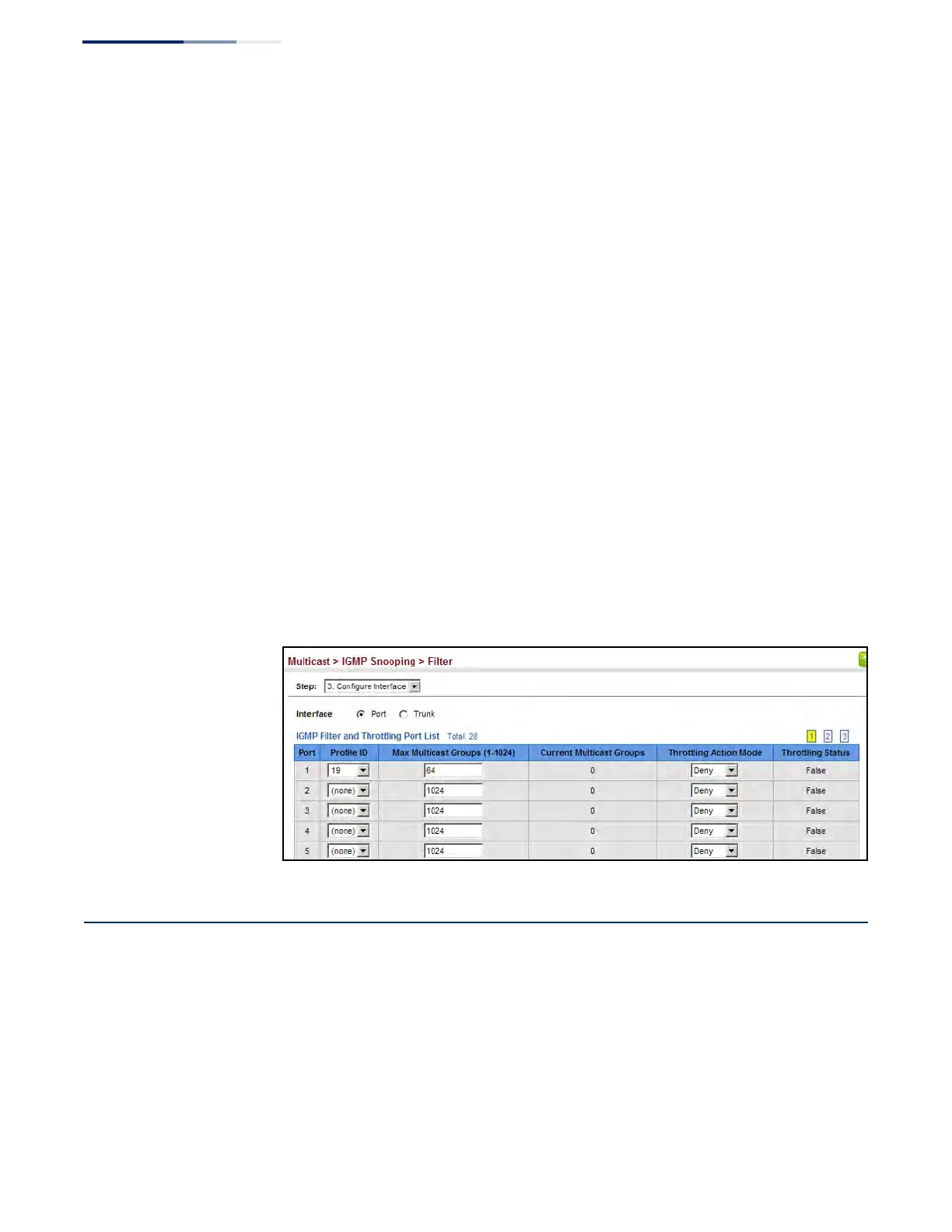Chapter 14
| Multicast Filtering
MLD Snooping (Snooping and Query for IPv6)
– 566 –
◆ Current Multicast Groups – Displays the current multicast groups the
interface has joined.
◆ Throttling Action Mode – Sets the action to take when the maximum number
of multicast groups for the interface has been exceeded. (Default: Deny)
■
Deny - The new multicast group join report is dropped.
■
Replace - The new multicast group replaces an existing group.
◆ Throttling Status – Indicates if the throttling action has been implemented on
the interface. (Options: True or False)
Web Interface
To configure IGMP filtering or throttling for a port or trunk:
1. Click Multicast, IGMP Snooping, Filter.
2. Select Configure Interface from the Step list.
3. Select a profile to assign to an interface, then set the maximum number of
allowed multicast groups and the throttling response.
4. Click Apply.
Figure 355: Configuring IGMP Filtering and Throttling Interface Settings
MLD Snooping (Snooping and Query for IPv6)
Multicast Listener Discovery (MLD) snooping operates on IPv6 traffic and performs
a similar function to IGMP snooping for IPv4. That is, MLD snooping dynamically
configures switch ports to limit IPv6 multicast traffic so that it is forwarded only to
ports with users that want to receive it. This reduces the flooding of IPv6 multicast
packets in the specified VLANs.
There are two versions of the MLD protocol, version 1 and version 2. MLDv1 control
packets include Listener Query, Listener Report, and Listener Done messages
(equivalent to IGMPv2 query, report, and leave messages). MLDv2 control packets

